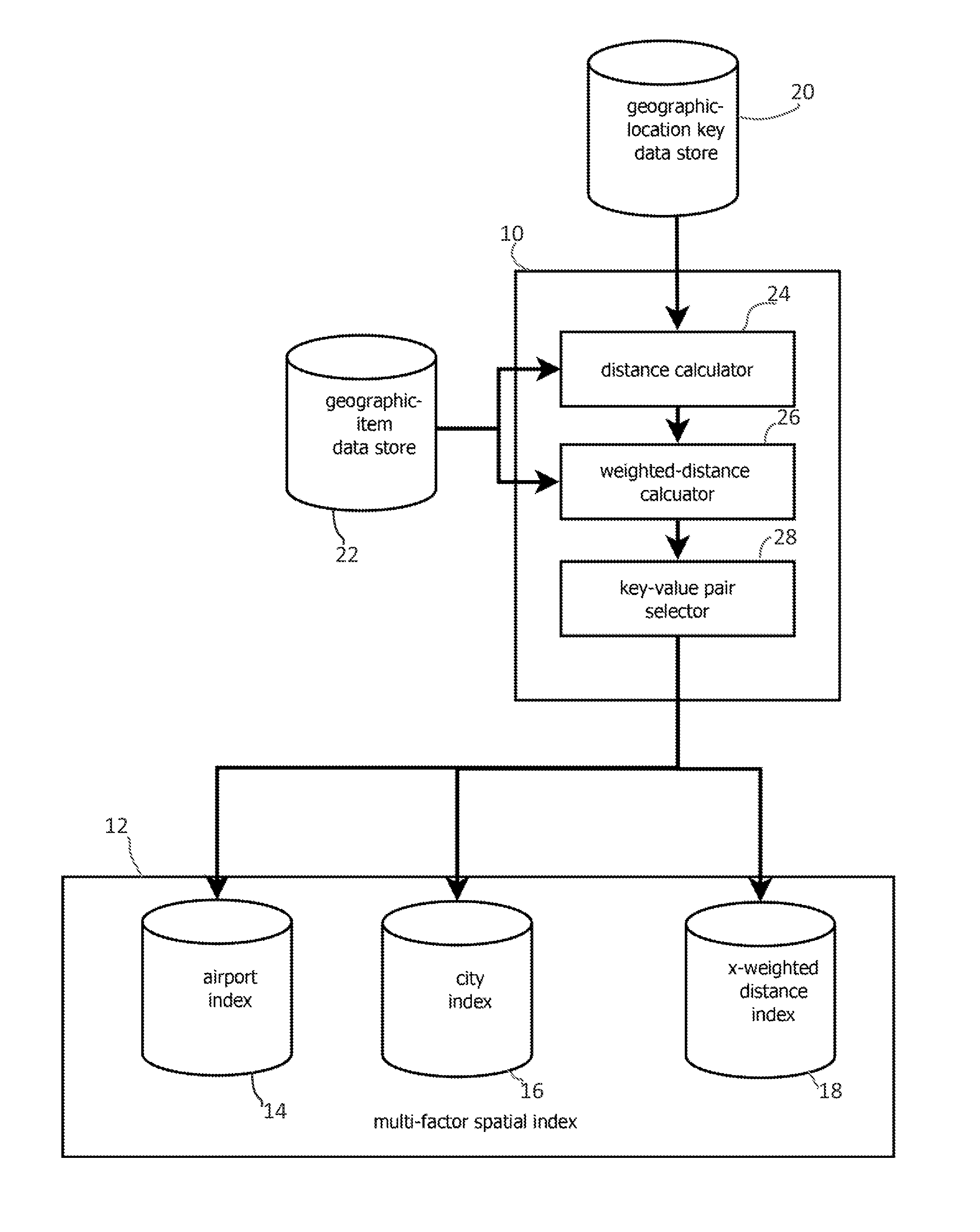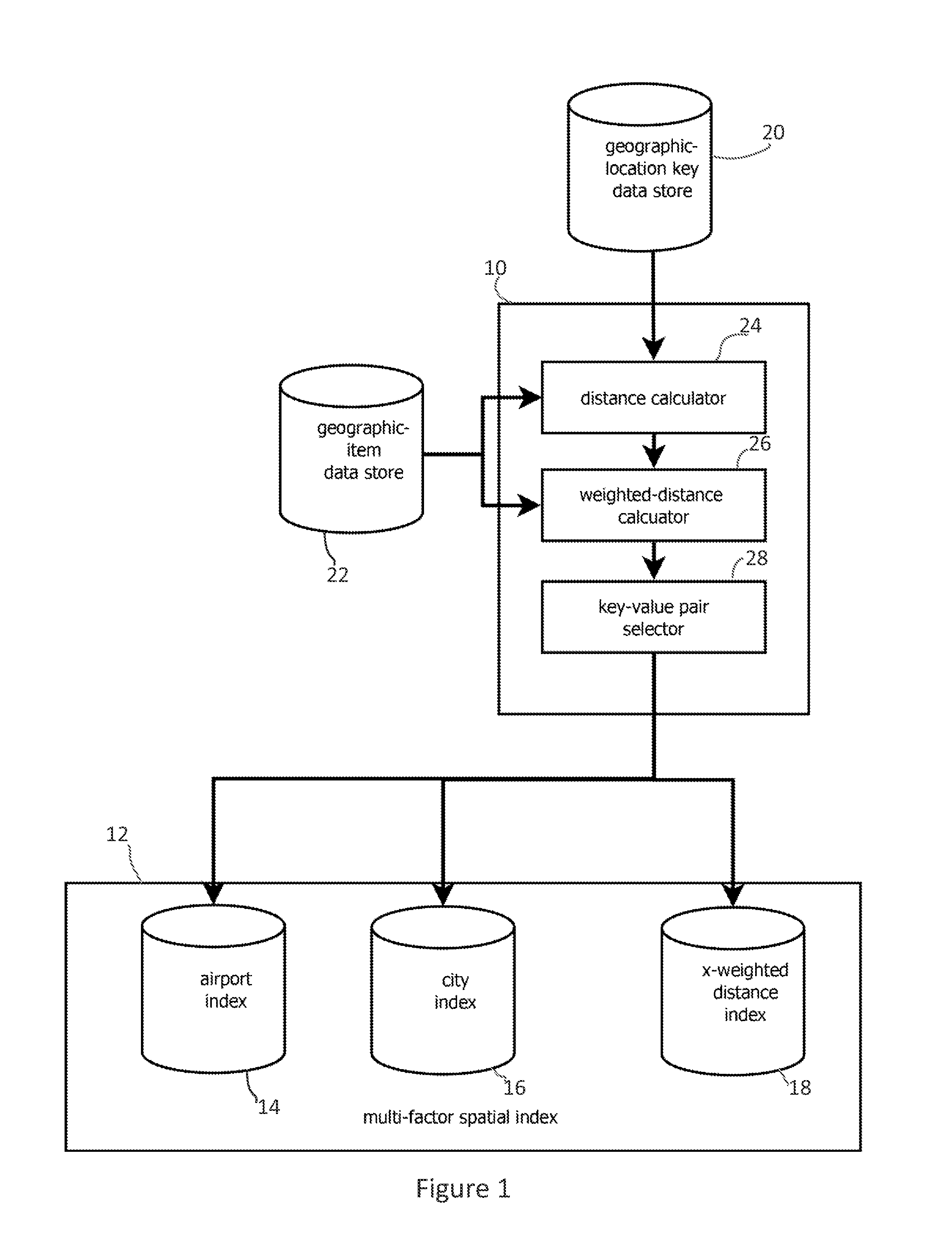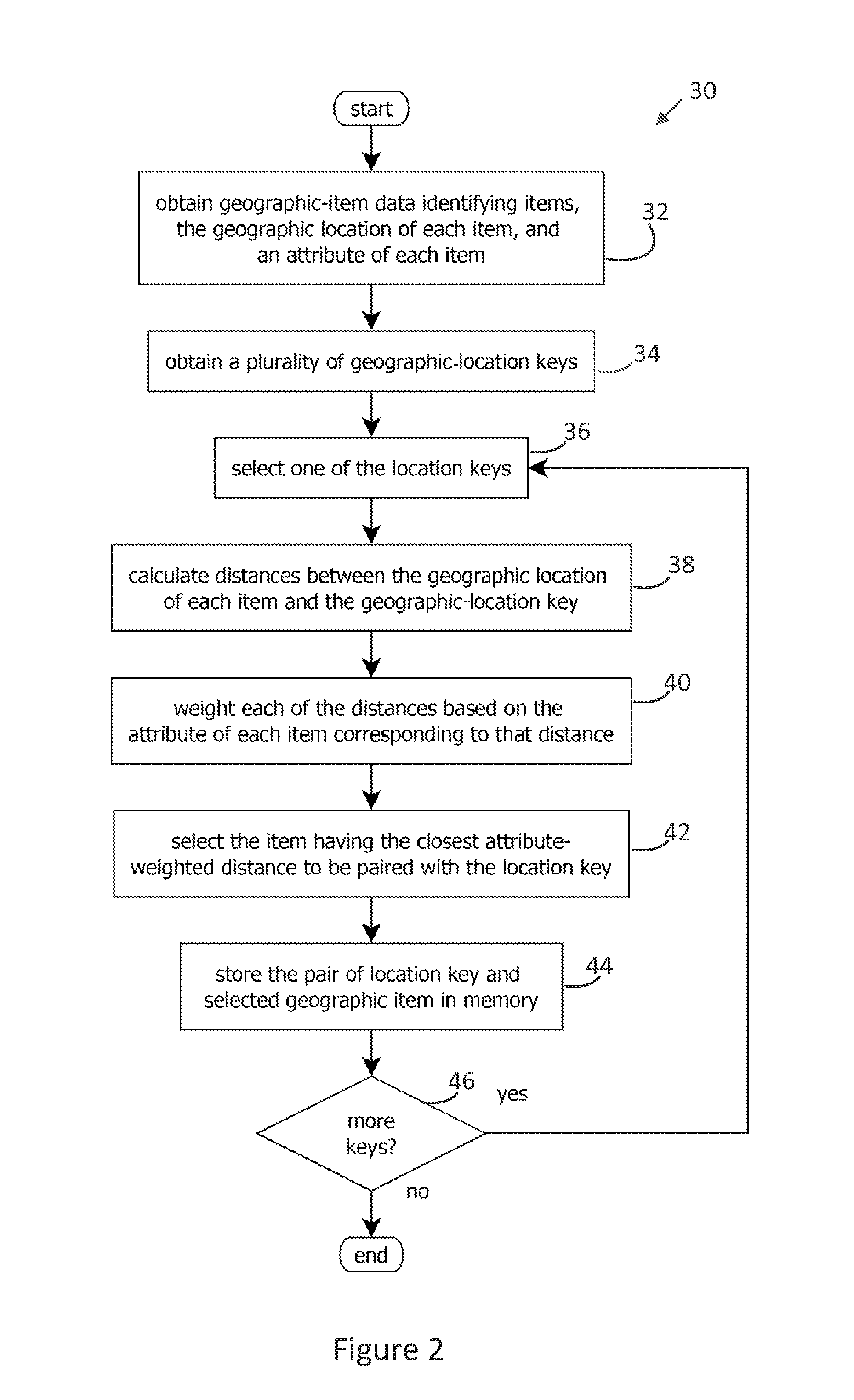Weighted-distance spatial indexing
a weighted distance and spatial indexing technology, applied in the field of spatial searches, can solve the problems of slowing down the search, reducing the usefulness of spatial searches, and difficult implementation of spatial searches based on weighted distances
- Summary
- Abstract
- Description
- Claims
- Application Information
AI Technical Summary
Benefits of technology
Problems solved by technology
Method used
Image
Examples
Embodiment Construction
[0023]FIG. 1 shows an embodiment of a spatial indexer 10 that forms indexes 12 for expediting weighted-distance spatial searches. The indexes may map a set of geographic locations about which a searcher may base a query to geographic items responsive to that query. For instance, geographic locations may be mapped to airports, cities, restaurants, or other items in the index. Which item is paired with a location may be based on a weighted distance between that item and the location, e.g., based on both the distance from the location to an airport and the capacity of that airport.
[0024]The spatial indexer 10 may be capable of forming multiple spatial indexes 14, 16, and 18, each reflecting different distance-weighting functions. For instance, index 14 may be a spatial index of airports based on distances weighted by airport capacity, and index 16 may be a spatial index of cites based on distances weighted by city population. (Three spatial indexes are shown, but other embodiments may ...
PUM
 Login to View More
Login to View More Abstract
Description
Claims
Application Information
 Login to View More
Login to View More - R&D
- Intellectual Property
- Life Sciences
- Materials
- Tech Scout
- Unparalleled Data Quality
- Higher Quality Content
- 60% Fewer Hallucinations
Browse by: Latest US Patents, China's latest patents, Technical Efficacy Thesaurus, Application Domain, Technology Topic, Popular Technical Reports.
© 2025 PatSnap. All rights reserved.Legal|Privacy policy|Modern Slavery Act Transparency Statement|Sitemap|About US| Contact US: help@patsnap.com



